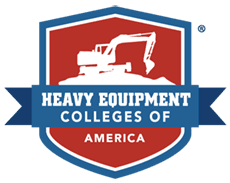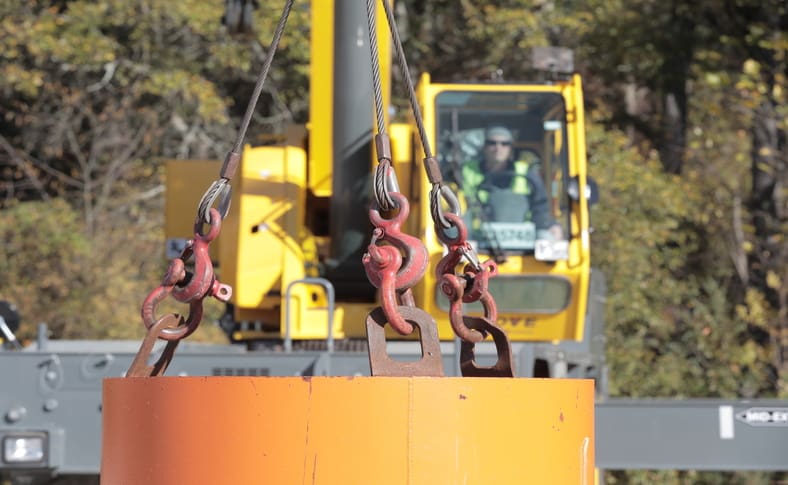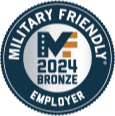Mobile cranes play a vital role in construction, logistics, and infrastructure development, offering unmatched lifting power and mobility. However, they also come with significant risks when operated without proper training or oversight.
Each year, mobile crane accidents result in countless serious injuries, fatalities, and costly property damage, many of which are preventable. Whether you’re a crane operator, site supervisor, or simply wanting to join the field, understanding how to prevent mobile crane accidents is critical to maintaining a safe job site.
Table of Contents
Mobile Crane Accidents: Prevention Tips
Mobile crane accidents are often preventable with the proper training, planning, and attention to detail. From construction sites to infrastructure projects, these machines require expert operation and constant awareness to ensure safety. Unfortunately, incidents involving mobile cranes continue to occur due to negligence, miscommunication, or a lack of training.
At Heavy Equipment Colleges of America (HEC), we want to make sure you and your team are set up for success. Our brief guide provides essential mobile crane accident prevention tips, drawing insights from industry best practices and real-world safety protocols.
From pre-operation inspections to load limit awareness and effective communication, these strategies are designed to keep operators, crew members, and work zones safe.
1. Conduct a pre-operation inspection
Before each shift, operators should conduct a thorough inspection of the mobile crane to ensure its safe operation. This includes checking fluid levels, inspecting wire ropes, examining tires or tracks, verifying safety devices, and testing all operational controls.
A quick walkaround isn’t enough. Take the time to complete a detailed checklist specific to the equipment type.
Look for signs of wear, such as hydraulic leaks or structural cracks. Confirm that the hoisting system, boom, and outriggers are in proper working order. Make sure that the crane is level and that all safety decals and load charts are legible.
Failing to inspect equipment before use is a common cause of mechanical failure during lifts. Prevention starts with consistency, and daily inspections reduce downtime and keep crews safe.

2. Hire Qualified Personnel
Operating a mobile crane is not an entry-level task. It requires specialized training, licensing, and ongoing practice. Only certified professionals should operate cranes or assist with signaling and rigging.
Hiring qualified personnel provides peace of mind that everyone on the site understands not only how to operate the equipment but also how to assess site conditions, interpret load charts, and communicate clearly with team members.
Look for individuals with verifiable credentials and certifications from respected training programs, such as the Mobile Crane Operation Program offered at HEC.
Start Your Crane Operator Career With Confidence
Kickstart Your Crane Operator Journey Today!
Hands-On Training | OSHA-Compliant Courses | Job-Ready Skills
Become a Certified Tower Crane Operator Today!
Start Enrollment ProcessFind The Right Location For You3. Review Operator Manuals
Even experienced operators should review the manufacturer’s operator manual regularly. Each crane model has unique capabilities, limitations, and control systems. Familiarity with the manual ensures proper use and reduces the risk of user error.
Some models include digital load management systems or automatic safety overrides that require specific knowledge to operate effectively. Don’t rely on experience alone, and make sure that manuals are accessible on the job site so that all team members understand key details like rated capacities and emergency procedures.
Be sure to make it a habit to review the manual when switching machines, especially on multi-crane job sites.
4. Be Careful Getting In and Out of the Cab
Slips and falls remain a leading cause of injury on construction sites. Entering and exiting the crane cab might seem simple, but doing it carelessly can result in serious harm.
Use the three-point contact method: keep two hands and one foot, or two feet and one hand, in contact with the vehicle at all times. Face the cab, not outward, and never jump from the steps. Before entering, make sure the steps and handholds are clean and dry.
Operators should also inspect the ground near the cab to avoid stepping into mud, ice, or uneven terrain. These small precautions prevent avoidable injuries and reinforce a culture of safety.
5. Understand Load Limits and Stability
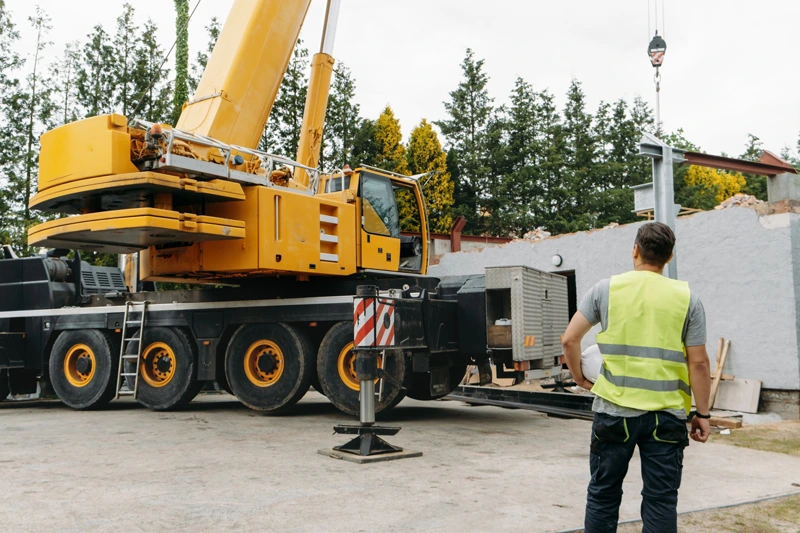
One of the most common causes of mobile crane accidents is overloading. Every crane has specific load limits, and exceeding them can cause tip-overs, structural damage, or catastrophic failure.
Operators must always refer to the crane’s load chart and consider boom length, angle, and radius when planning a lift.
It’s also important to assess ground stability. Cranes should only be operated on firm, level surfaces. Site supervisors should routinely evaluate soil conditions, especially after heavy rain or excavation, and operators should use mats to better support the crane on soft or uneven terrain.
Weather conditions such as high winds can also compromise crane stability. Operators must monitor forecasts and pause operations when wind speeds exceed safe thresholds for their specific equipment.
To build confidence in load management, many professionals pursue targeted training like the Fixed Cab Crane Operation Program or the Lattice Boom Crane courses at HEC. These programs provide hands-on experience with diverse lifting scenarios.
6. Be Aware of Your Surroundings
Even with a solid lift plan and safe equipment, a lack of environmental awareness can turn a routine job into a dangerous one. Operators must remain vigilant about hazards around the crane, including electrical lines, moving vehicles, scaffolding, buildings, and pedestrian areas.
Always maintain a clear buffer zone around the crane’s working area. If electrical wires are nearby, keep the minimum clearance distances required by OSHA or local regulations, typically at least 10 feet. Assign a dedicated spotter when maneuvering in tight spaces or around blind corners.
Being aware of one’s surroundings also includes understanding traffic flow around the site. Ground crew members should be briefed before each lift, and unauthorized personnel must be kept clear of the lift zone.
7. Use Proper Communication and Hand Signals
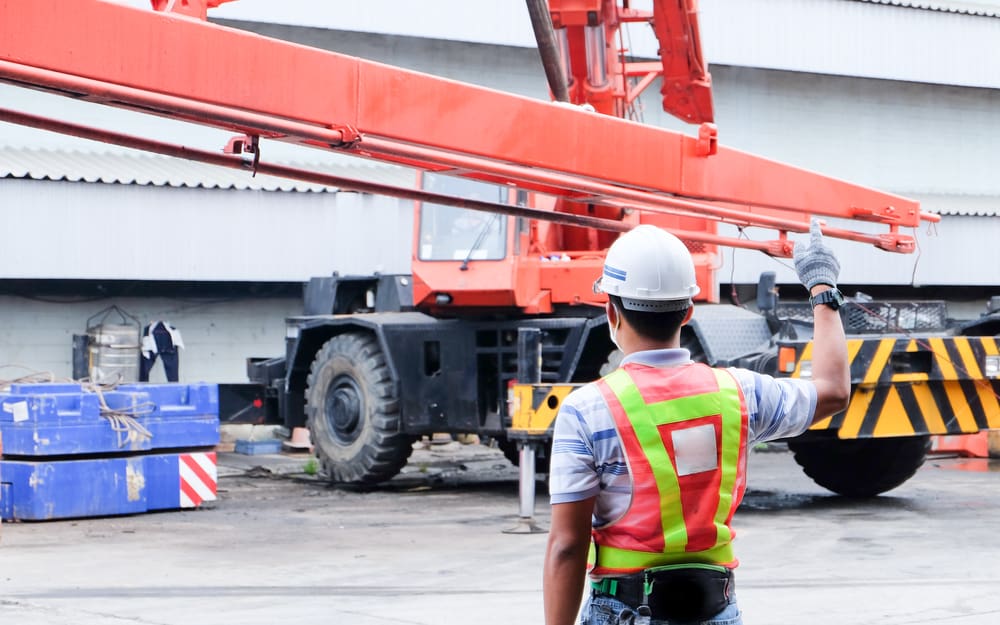
Clear communication is critical to safe crane operation. Every lift should involve a designated signal person who understands and uses standardized hand signals. These signals should be agreed upon during pre-lift meetings and understood by the entire crew.
In noisy environments, two-way radios or headsets are often used in conjunction with hand signals to enhance communication. However, visual signaling remains the primary form of communication in many scenarios, especially when audio equipment is unavailable or fails.
Miscommunication between operators and ground personnel can lead to dropped loads, injuries, or property damage. That’s why many crane safety experts recommend incorporating communication training into certification programs and regular safety drills.
Start your Career with HEC Training Programs
Preventing mobile crane accidents takes more than a checklist. It requires a workforce trained in the safest and most current operating practices.
Whether you’re just starting your career or looking to expand your credentials, Heavy Equipment Colleges of America (HEC) offers specialized training designed to prepare you for the demands of the field.
Our heavy equipment programs are built on real-world experience, certified instruction, and industry-standard equipment. You’ll gain the hands-on skills and technical knowledge required to handle mobile cranes safely and confidently.
Many of our students go on to operate cranes in construction, energy, shipping, and industrial environments across the country.
Each course is designed to meet national standards and includes classroom instruction, field training, and support for job placement. Whether you’re interested in working with mobile cranes or tower cranes, it all starts with the right education.
Apply online or visit our admissions office to learn more about our campuses and take the first step toward your career as a heavy equipment operator.
Build a Strong Future in Heavy Equipment Operation
Train to Operate Mobile Cranes Safely and Confidently
Real-World Experience | Expert Instructors | Career-Focused Training
Enroll in Our Crane Operator Program Today!
Start Enrollment ProcessFind The Right Location For You